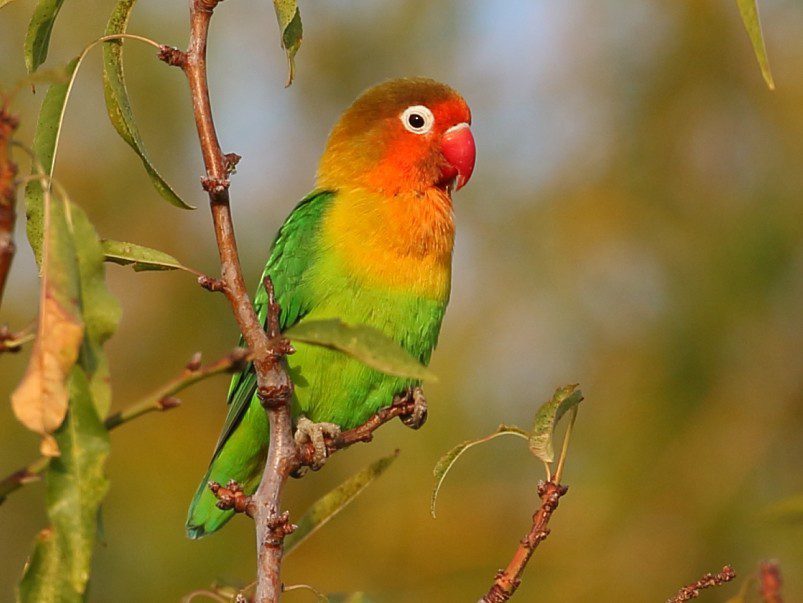
Fisher’s lovebird

| Fisher’s lovebird | agapornis fischeria |
| Order | Parrots |
| family | Parrots |
| Race | Interjections |
The species was named after the German physician and African explorer Gustav Adolf Fischer.
Appearance
Small short-tailed parrots with a body length of not more than 15 cm and a weight of up to 58 g. The main color of the plumage of the body is green, the head is red-orange in color, turning into yellow on the chest. The rump is blue. The beak is massive, red, there is a light cere. The periorbital ring is white and glabrous. Paws are bluish-gray, eyes are brown. Sexual dimorphism is not characteristic, it is impossible to distinguish male and female by color. Usually females have a large head with a massive beak at the base. Females are larger than males in size.
Life expectancy in captivity and with proper care can reach 20 years.
Habitat and life in nature
The species was first described in 1800. The number of the modern population ranges from 290.000 to 1.000 individuals. The species is not threatened with extinction.
Fisher’s lovebirds live in northern Tanzania near Lake Victoria and in east-central Africa. They prefer to settle in the savannas, feeding mainly on the seeds of wild cereals, the fruits of acacia and other plants. Sometimes they harm agricultural crops such as corn and millet. Outside the nesting period, they live in small flocks.
Reproduction
The nesting period in nature begins from January to April and in June – July. They nest in hollow trees and hollows at a height of 2 to 15 meters, most often in colonies. The bottom of the nesting area is covered with grass, bark. The female carries the nesting material, inserting it between the feathers on her back. The clutch usually contains 3-8 white eggs. Only the female incubates them, while the male feeds her. The incubation period is 22 – 24 days. Chicks are born helpless, covered with down. At the age of 35 – 38 days, the chicks are ready to leave the nest, but their parents feed them for some more time.
In nature, hybrids with a masked lovebird are known.





